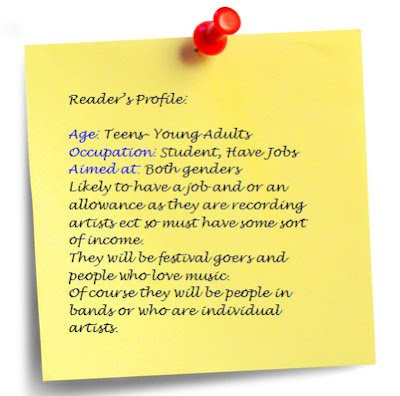
Monday, 25 January 2010
Sunday, 24 January 2010
Friday, 22 January 2010
Magazine Research. - Lizzie
Thursday, 21 January 2010
Wednesday, 20 January 2010
Sunday, 17 January 2010
Front Cover Deconstruction 3 - Lizzie

The top of the pops brand identity/ masthead is covered by Joe which shows Joe’s importance and that the brand identity is so recognisable it can even be partially covered up. Bottom left corner is the bar code, issue no., month and price. Joe is smiling and making direct eye contact with the reader making them feel happy as though there actually there with him and makes the audience feel good. Next to him on the left the Wanna Be Famous? Is a sell line with the use of pictures, bold fonts and highlighted words such as Famous (corresponding next to two pictures of famous people that many young teenagers would know). The bold words all over the cover create an attractive perspective for buyers. Fans, Fights and Fakers! Is a clever alliteration and is catchy for the reader. Its title is also in red which matches a colour theme with the clothes of N-dubz which are all wearing red. Underneath the guess who highlighted in a yellow arrow immediately stands out against Joes black and white clothes and the rhetorical question starts to get the reader thinking and makes them want to buy the magazine and read it to find out. At the bottom right the quote by Robert gives a sneak preview of what his interview is about. The use of the picture is also used for different reasons. It’s used to show who it is, he is famous and very recognisable to the magazines target audience and also it will attract a lot of girls as many find him attractive. JOE NEEDS YOU! Involves the audience and makes them feel wanted and helps make them feel a part of this magazine. Star style on a budget just above is something that will appeal to its audience and readers as part of the hierarchy of needs as everyone would love and dream to be able to dress and buy clothes like all the people in the papers with photographs by the paparazzi and this magazine is giving them an article that could help them escape from reality and step into the shoes of their idols. There are 7 pictures to make it eye catching for readers and to jump out on the shelf’s. It’s quite a hectic cover however all the minor stories surround Joe by the outer edge of the magazine so it shows he is the main story and the main focus of the cover. Its colours are mainly pink white and yellow which are very feminine colours. The blue behind Joe implies its connotation as relaxing and calm and is exactly how the magazine wants the readers to feel when they buy and read the magazine. I believe the demographic of the magazine would be young teenagers interested in pop music and celebrities. With the choice of artists and bands I would think that the main area of focus would be around 10years of age to 15. The use of colours suggests it’s mainly aimed at girls and is for people who get pocket money so depend on parents.
Analysis
Even though the magazine is still running and still on the shelf's and most newsagents and other shops, it is no where near as popular as it was when it was first released. I bought this magazine in WHSmith. However there is an actual section for music magazines featuring kerrang, Q, rolling stones and many more and including even more selected genres such as classical magazines. furthermore i found top of the pops amongst a bunch of other magazines in the kids section at the bottom of the shelf which means its not as well known and isn't even considered much of a music magazine anymore and more of a gossip column. the fact that its at the bottom of the shelf's hidden away suggests that it isn't bought by many people and has little status in the magazine industry. This is just one example of a failed magazine that hasn't ticked all the right boxes and appealed to its audience and demographic.
Case Study - Lizzie Front Cover Analysis

Case Study - Lizzie Layout






































